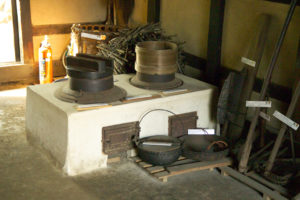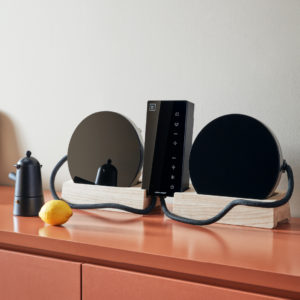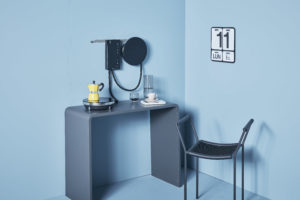



The stove or oven is undeniably the heart of every home. Although this might sound cliché, humans have slept, eaten, and lived around fires since the dawn of time. It’s astonishing how far technology has come in the past century, from a continuous burning fire within a fireplace with all of its hazards, to induction hobs with smart moving plates that allow you to conserve space while enjoying the newest technologies, from intelligent sensors to child-lock. Join us as we uncover the history of the most important element in the kitchen, the hob:
Fires and hearths:
For most of human history, cooking over an open fire was the one and only way to cook a meal. Fire was most likely a huge evolutionary advance for humanity, providing us with not just delicious meals, but also the additional nutrients and excess energy required for the development of large brains. By the Paleolithic era, 200,000 to 40,000 years ago, we were building simple hearths with a few stones in a circle. These are the same kinds of hearths that kids today learn to build at summer camps, and for the next many millennia, these hearths, in different forms, were the center of human homes.
Burning Fireplaces:
Until around 150 years ago, when gas ranges became popular, every family had a fireplace, and every householder was preoccupied with keeping the kitchen fire going. In the days before matches, if you didn’t maintain the house fire blazing constantly, you may not have been able to restart it. The medieval curfew, derived from the French couvre-feu, was a big metal lid used to cover the embers of a fire at night and keep them burning until dawn. Pioneers in the nineteenth century who awoke to find the ashes cold traveled for miles to borrow fire from their neighbors.
Closed Stoves:
The notion of the closed stove had been developed far earlier, however, by Chinese and Japanese civilizations. Clay stoves that fully surrounded the fire were known as early as the Chinese Qin Dynasty, almost 2,240 years ago, and a similar design known as the kamado appeared in Japan during the Kofun era, almost 1,722 years ago. These stoves were powered by wood or charcoal, which was fed via a hole at the front. Pots were put above or suspended into holes at the top of the knee-high structure in both forms. Raised kamados were constructed during the Edo era in Japan (1603–1867).

Iron Stoves:
The first iron stoves came in the 18th century. The Franklin stove, a wood-burning stove believed to have been developed by Benjamin Franklin in 1742, is an early example. It featured a winding channel for hot exhaust gases to leave, enabling heat to enter the chamber rather than up the chimney. The Franklin stove, on the other hand, was intended for heating rather than cooking. Benjamin Thompson was among the first to exhibit a functional iron cooking stove at the start of the nineteenth century. His Rumford stove utilized a single fire to heat numerous pots that were also hung into holes to be heated from the sides. It was even feasible to control the temperature of each individual hole. His stove, on the other hand, was intended for huge canteen or castle kitchens. It would be another 30 years before the technique was perfected and the size of the iron stove was lowered enough for residential use. Stewart’s Oberlin stove was a significantly smaller iron stove that was patented in the United States in 1834. It was a major commercial success, selling over 90,000 copies over the following 30 years. Similar styles debuted in Europe in the 1830s. In the years thereafter, these iron stoves have grown into true cooking machines, complete with flue pipes linked to the chimney, oven holes, and water heating facilities. The gaping holes into which the pots were initially suspended were now covered by concentric iron rings on which the pots were set. The inner rings could be removed depending on the size of the pot or the amount of heat required.

Gas stoves.
These stoves were all powered by wood, charcoal, or coal. The earliest gas stoves were invented in the 1820s, but they were isolated experiments. (In 1826, James Sharp of Northampton, England, invented a gas stove and established a gas stove factory in 1836.) A gas stove was shown at the London World’s Fair in 1851, but it wasn’t until the 1880s that this technology became commercially successful. The major cause of this delay was the sluggish expansion of the gas pipe network. The early gas stoves were bulky, but the oven was quickly incorporated into the base and the size was lowered to match the rest of the kitchen furniture. In the 1910s, manufacturers began enameling their gas stoves to make cleaning simpler. Gustaf Daln, a Swedish Nobel Prize laureate, designed the AGA cooker, a high-end gas burner, in 1922. Despite its high price, it is considered the most efficient design and is a greatly sought-after kitchen “must-have” in some circles.
The AGA, as well as comparable devices like the Rayburn Range, are examples of always-on stoves that continue to burn fuel even when no cooking is being done. Stoves (or ranges) like this are often used instead of boilers or furnaces to give hot water and central heating to the rest of the home.
Electrical Stoves:
The first efforts to make electrical stoves were made in the 1880s, but their first premiere was at the Chicago World’s Fair in 1893, when an electrified model kitchen was shown. But, like the gas stove, the electric stove got off to a slow start. This was partly because the technology was unstable and partly because cities and towns had to be wired for electricity first. By the 1930s, technology had changed, and the gas burner was slowly being replaced by the electric stove, especially in home kitchens.
The Evolution of the Electric Stove:
When the electric hob was invented, it opened up new possibilities for stoves and hobs.
In the first method, heating coils were used to heat iron hotplates on which pots were set.
In 1953, a North American named Donald Stookey made the ground-breaking discovery of glass-ceramic. Because of its easy-to-clean surface, it immediately gained popularity as a go-to choice for the kitchen. Stookey accidentally set the oven to a higher temperature than he planned during an experiment. Using a heating coil or halogen lamps to heat anything placed over them was also the first step for numerous thermal resistance kitchen devices, as well as the basis for glass-ceramic hobs we know today.
Induction cooking came next. It was first displayed at the 1933 World’s Fair in Chicago and was designed for commercial kitchens before making its way into the home market.
In the second half of the nineteenth century, the British scientist Michael Faraday invented electromagnetic induction, which allowed him to generate electricity from magnetism. The induction hob, unlike the vitroceramic hob, does not employ resistance to heat pans. Instead, it employs electromagnetic technology. Westinghouse did not make it widespread in kitchens until the 1970s.
Live the Evolution of the Kitchen with Fabita.
As living spaces become smaller, social behaviors become more nomadic, and living environments become more hybrid, Italian manufacturer Fabita has teamed up with the Turin-based Adriano Design Studio to deconstruct the kitchen and provide a series of light, flexible elements that fit into today’s lifestyle.
Ordine, for example, is a significant advancement in the realm of induction cooking. Ordine’s two moveable circular induction plates save up room on the kitchen counter without sacrificing efficiency or performance. Ordine is the best design for small flats, workplaces, and restricted locations, enabling the use of numerous pans at the same time and with ease. The space previously occupied by bulky hobs is now available for other uses.

The use of the best glass-ceramic available enables the Ordine plates to warm up faster, with less afterheat and the adjacent surfaces staying cool. To ensure total safety, the Ordine safety precautions go above and beyond, including a child lock and heat-resistant wires. The danger of burn from the induction plates is always nil, regardless of how hot the pans are.
While massive heavy machinery ruled the past, the future will undoubtedly belong to light, smart elements that are much more efficient and less of a hindrance.
